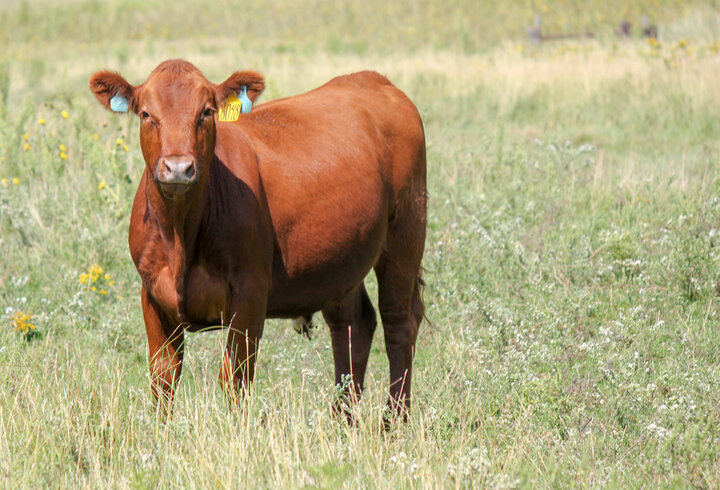Insecticide-impregnated ear tags were first introduced in the late 1970s and have been used to reduce face fly and horn fly populations. Active ingredients in insecticide ear tags kill flies by direct contact. Small amounts of insecticide are released from the ear tag into the oils present on animal’s hair. The face, neck, topline and flanks receive the most product through natural grooming behavior. Interaction between cattle enhances the transfer of product between animals.
During the past 40 years, the active ingredients within ear tags have been organophosphate and synthetic pyrethroid classes. In the early 2000s, a macrocyclic lactone class was developed and provided an alternative to organophosphate and synthetic pyrethroid insecticides to help manage horn fly resistance. For more on pasture fly resistance, see Pasture Fly Resistance.
Fly tags impregnated with either a macrocyclic lactone, organophosphate or a pyrethroid can provide long-term protection throughout the fly season. Applying the fly tag at the right time is key to successful horn fly control. Research suggests fly burden does not result in economic loss until horn fly numbers reach 200 or more flies per animal, also known as the economic injury level (EIL). The EIL is the level of fly numbers that negatively impacts animal production to warrant paying for fly control. Therefore, it is recommended tags should not be applied until this threshold is met, usually late May or early June in Nebraska.
Most available fly tags offer protection for 8 to 13 weeks, but are most effective during the first 45 to 60 days following application. Fly tags applied too early in the grazing season may be largely expended and not offer enough protection during peak fly season. In Nebraska, it is strongly recommended to apply 2 tags per adult or yearling animal to obtain maximum fly reduction. If attempting to control face flies to reduce pinkeye in calves, then calves need to be tagged based on label recommendations. Annual rotation among pyrethroid, organophosphate, and macrocyclic lactone tags and the removal of tags at the end of the season is recommended to help mitigate problems with emerging fly resistance. Insecticide ear tags available for 2023 are found in Table 1.


Interviews with the authors of BeefWatch newsletter articles become available throughout the month of publication and are accessible at https://go.unl.edu/podcast. You can subscribe to the BeefWatch newsletter here: http://go.unl.edu/Beefwatch_subscribe.
Topics covered:
Backgrounding/stocker/yearling, Grazing systems & best practices, Cattle health, Pasture & range, Cattle health & BQA

